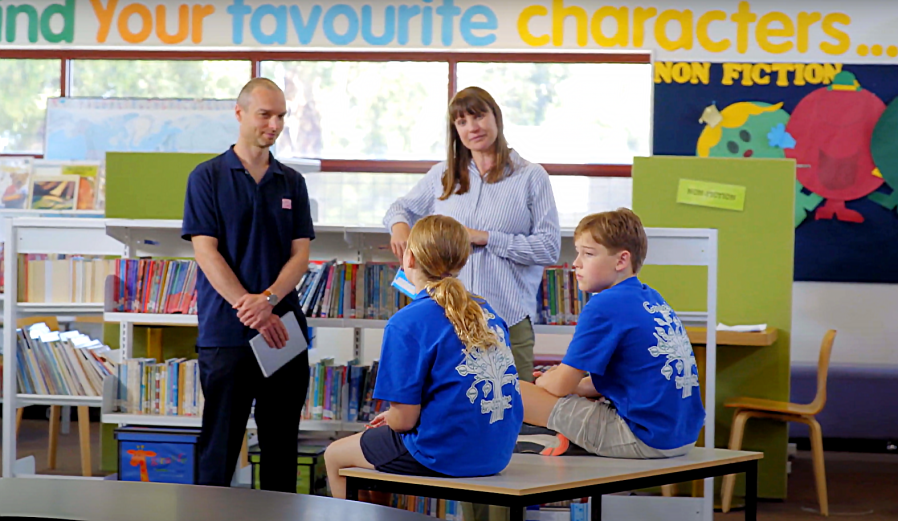 'Child-centred disaster risk reduction' video still. Courtesy Bushfire Natural Hazards CRC
'Child-centred disaster risk reduction' video still. Courtesy Bushfire Natural Hazards CRC
Primary-school-aged students can be “influencers” when it comes to bushfire preparedness according to research by RMIT University’s Dr Briony Towers.
Through her 10 years of research, Dr Towers has found that young people can use their knowledge, skills and understanding of bushfire to help educate others and keep their communities safe.
Key to this is tailoring their learning to personal interests and priorities including the natural and social environment that they are in every day.
Her findings have been used as the foundation for the Schools in Fire Country pilot project, a new school-based approach to bushfire education that focuses on disaster risk reduction and how children can participate in emergency planning.
Funded by Safer Together and led by CFA’s program development specialist Neil Munro, the project highlights a move away from generic teaching materials to an education package that is place-based and reflects a student’s natural and social environment and priorities.
Neil has collaborated with a broad range of partners to develop a prototype education package, including experts and stakeholders from across emergency management and the education sector. The prototype is currently being piloted with Year 5 and 6 students at Harkaway Primary School, a high bushfire risk area in Melbourne’s outer south east.*
Neil said the new education package was a major shift in approach to educating children and young people about disaster risk reduction and resilience, empowering them as active citizens.
“Dr Tower’s research found that a one-size-fits-all approach doesn’t work because bushfire hazards and disasters are abstract concepts to children,” Neil said.
“Through this package we aim to address common misconceptions, reduce the fear of fire and empower children to get involved in decision making and solving problems in their local context.
“Students learn about fire ecology, cultural burning, bushfire behaviour and risk, and are then encouraged to explore their own bushfire problem, take action and share it with an audience.
“Students at Harkaway have so far formed a bushfire safety committee, held workshops and made practical changes to their school’s Emergency Management Plan. They have also recorded a video, detailing how they would like to learn and be taught by agencies and teachers.
“They are becoming agents of change not only at their school but in their homes and wider community.”
While the package is designed for teachers, Neil said it would be delivered with support from subject matter experts, CFA and fellow emergency services agencies.
“It is very important that students and teachers are supported by local experts, and that fire agencies and experts collaborate closely with each other and the school community to identify and achieve common goals.’
“We are still at the pilot testing stage but the outcomes so far have been extremely positive,” Neil said.
“Our overarching goal will be to develop a sustainable, scalable education package that can be used across the more than 800 schools in high fire risk areas in Victoria.
“This will involve building partnerships, utilising the resources and strengths we have, advocating for change, and working together across fire agencies, the education sector and with communities.”
Neil said there was scope to use this new approach to disaster education in schools more broadly including for other disasters such as floods.
“It’s about working together for a common goal. When we work with other agencies and key stakeholders to deliver education, we’re much more powerful.”
The Bushfire and Natural Hazards CRC has developed a video highlighting the research informing the pilot program.
*The pilot has been impacted by COVID-19 restrictions